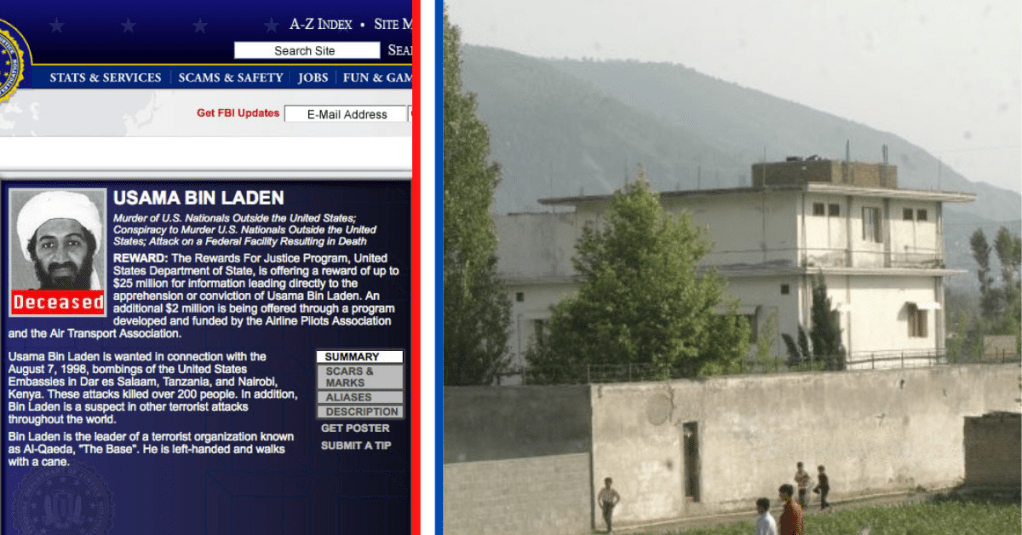

Operation Neptune Spear was the mission of a lifetime, the kind that Navy SEALs train for years to carry out. On May 2, 2011, a team of SEALs launched a daring raid on a compound in Abbottabad, Pakistan, and killed the world’s most wanted terrorist: Osama bin Laden. In this captivating and immersive story, we’ll take you behind the scenes of Operation Neptune Spear and reveal the untold story of how the SEALs pulled off one of the most audacious missions in American military history.
Operation Neptune Spear Intelligence
The hunt for bin Laden had been going on for nearly a decade. By 2011, the CIA had narrowed down his location to a compound in Abbottabad. But confirming his presence there would require extraordinary measures. That’s where a team of analysts and operatives from the CIA and the National Security Agency came in and Operation Neptune Spear got its start.
The analysts spent months analyzing satellite imagery, intercepting phone calls, and monitoring couriers who visited the compound. Finally, in August 2010, they found what they were looking for: a courier who was most likely working for bin Laden.

Planning Begins
Once the courier’s identity was confirmed, a team of analysts at the CIA’s Counterterrorism Center began working on a plan to capture or kill bin Laden. They considered all possible scenarios, from a drone strike to a ground assault. But ultimately, they decided that a ground assault would give them the best chance of success. That’s where the SEALs came in. The plan of Operation Neptune Spear was to insert a team of SEALs by helicopter under cover of darkness, breach the walls of the compound, and search for bin Laden.
Go Time
On the night of May 1, 2011, the SEALs moved on Operation Neptune Spear. They flew in two Black Hawk helicopters, one of which had a backup team of SEALs in case anything went wrong. The helicopters flew low over Pakistani airspace to avoid detection, and when they arrived over Abbottabad, they descended rapidly to avoid radar. The SEALs fast-roped down to the ground, and the helicopters pulled back to a safe distance.
As the SEALs approached the compound, they encountered resistance from bin Laden’s bodyguards. A firefight ensued, but the SEALs quickly gained the upper hand. They cleared each room one by one, searching for bin Laden. Finally, they found him hiding in a bedroom with one of his wives.

The Kill Shot
What happened next during the harrowing ordeal of Operation Neptune Spear has been the subject of much debate and speculation. But according to the official account, bin Laden was shot twice in the head by a SEAL who entered the bedroom after bin Laden refused to surrender. The SEALs quickly realized that they had found their target, and they began to gather intelligence and sensitive materials from the compound.
Aftermath
The news of bin Laden’s death spread quickly around the world, and crowds gathered outside the White House to celebrate. President Obama addressed the nation, declaring that justice had been done. The SEALs who had carried out the mission returned home as heroes, but they knew that their success came at a great cost. One of their helicopters had crashed during the mission, killing several SEALs and a military dog.
The story of how Navy SEALs killed bin Laden in Operation Neptune Spear is one of bravery, dedication, and precision. It’s a story of how America’s best and brightest can come together to achieve a seemingly impossible goal. But it’s also a story of sacrifice and loss, of the toll that war takes on those who fight it.

Operation Neptune Spear Impact
In the end, Operation Neptune Spear was not just a mission to kill bin Laden, but a mission to show the world that America will never back down in the face of terrorism. The operation was a pivotal moment in American military history, and it showcased the power and skill of the U.S. military’s special operations forces.
Even more than a decade after the operation, the legacy of Operation Neptune Spear continues. The operation dealt a major blow to Al-Qaida’s leadership, but it did not mark the end of the war on terror. The SEALs and intelligence community have continued to hunt down terrorists and disrupt their operations around the world.
The operation also sparked controversy and debate about U.S. foreign policy and the use of targeted killings. Some have criticized the operation as illegal or immoral, while others have defended it as a necessary measure to protect American lives. The debate over targeted killings continues to this day, as the U.S. military and intelligence agencies seek to balance the need to protect national security with the need to uphold international law and human rights.
